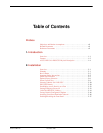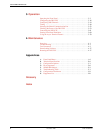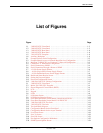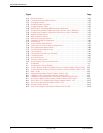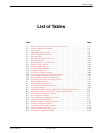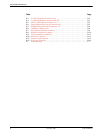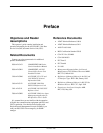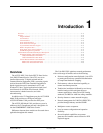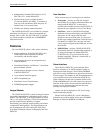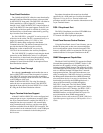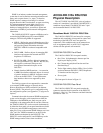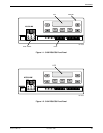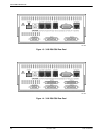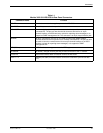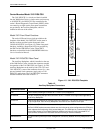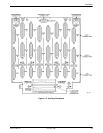
ACCULINK 316x DSU/CSU
1-2 December 1996 3160-A2-GB22-10
• Independently selectable DTE interfaces (V.35,
EIA-530A, V.11, and/or RS449/422).
• Flexible timing source, available from the
T1 network interface, the DSX-1 T1 interface, at
least one of the synchronous DCE data ports, an
internal clock, or an external clock.
• Flexible, user-friendly channel allocation.
The 3160/3164 DSU/CSUs are available in a compact
standalone case (Figure 1-1) that can be mounted on a
desktop, shelf, or wall. The 3161 DSU/CSU is available
as a circuit card that is installed into a COMSPHERE
3000 Series Carrier.
Features
The 316x DSU/CSU offers a wide variety of features:
• Integral modem for 3160/3164 DSU/CSUs only
which enables remote operation to enhance
serviceability and increases uptime.
• User interfaces for access to configuration and
alarm information.
• Front Panel Emulation via Windowst-based front
panel emulation software.
•
Front panel pass-through to access a remote
3160/3164 DSU/CSU.
• Async terminal interface support.
• DSX-1 Drop/Insert port.
• Front Panel Access Control feature.
• SNMP Management Support.
Integral Modem
The 3160/3164 DSU/CSUs contain an integral modem
that enables communication with remote devices such as
another 316x DSU/CSU, or an ASCII terminal or printer.
This is a low-speed (2400 bps), V.22bis dial modem that
provides remote dial-up capability to support
downloading, pass-through, alarm reporting, and remote
configuration and diagnostics. The integral modem can
also communicate with a PC running the 3100 Series
Front Panel Emulation software accompanying the 316x
DSU/CSU.
User Interface
There
are three ways of accessing the user interface:
• Front panel
– provides an LCD and a keypad
which enable you to display information about and
interact with the DSU/CSU. A menu tree is
available which enables control of the DSU/CSU in
the network (see Appendix A, Front Panel Menu).
• COM Port – used for 3100 Series Front Panel
Emulation software which displays the DSU/CSU
front panel on a PC and provides the same
functions as the actual front panel. It is also used
for the async terminal connection (3160/3164 only).
For Model 3161 DSU/CSUs, only one slot in the
carrier can be configured as the COM port; all slots
share the PC.
• MODEM Port – provides 3160/3164 DSU/CSU
functionality from a PC attached either remotely or
by using pass-through via another DSU/CSU
(3160/3164 only). It is also used for the async
terminal connection. This port is located only on
3160/3164 DSU/CSUs.
Alarm Interface
The 3160/3164 DSU/CSU can be attached, either
locally or remotely, to an ASCII terminal or printer to
display/print alarm messages. The COM and MODEM
ports can be used as destinations for Alarm Set and Alarm
Clear messages. This enables an ASCII terminal/printer or
async terminal to be used to monitor the DSU/CSU for
alarm conditions, but provides a potential conflict if the
COM or MODEM port is also the current active physical
interface. If this occurs, the user interface functions have
priority over any alarm messages that are sent to the
currently active physical interface.
Alarms can also be displayed on a PC that is using a
terminal emulation package.
Model 3160/3164 DSU/CSUs can be configured to
generate traps on alarms which can be sent to an SNMP
manager via either the MODEM or COM port.



